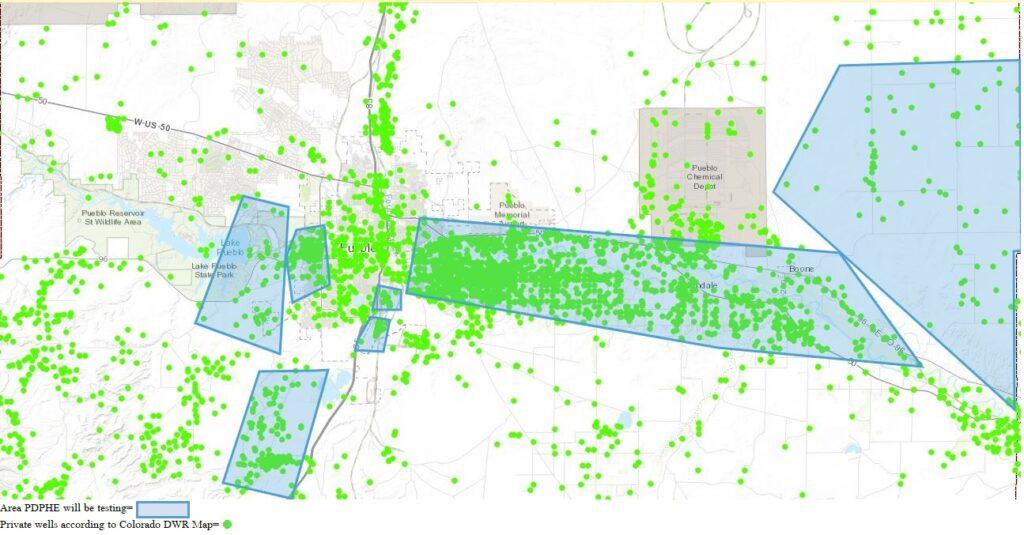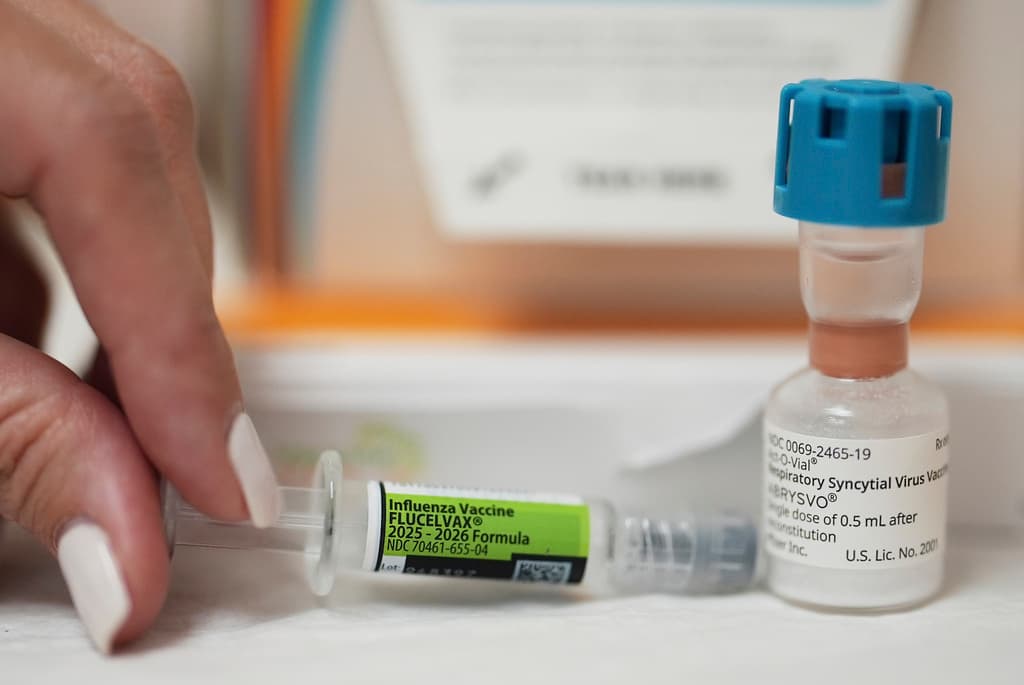
Some private wells in parts of Pueblo County have unsafe levels of toxic chemicals, according to a new report from the Pueblo Department of Public Health and Environment (PDPHE).
The chemicals, known as PFAS, or Per- and Polyfluoroalkyl Substances, are a family of nearly 15,000 chemical compounds known for their waterproofing qualities. They’re found in things like non-stick cookware, rain jackets, and fire retardant. Often called “forever chemicals,” they’re extremely difficult to remove from soil, water, and the human body. The chemicals have been linked to health issues including cancer, birth defects, and other issues.
The nine-month study focused on ponds, lakes, and rivers downstream from industrial sites. That includes areas like the Arkansas River and the Pueblo Reservoir.
Researchers also tested privately owned wells throughout the county. These wells are not regularly tested by the Environmental Protection Agency (EPA), unlike municipal water systems.
The report, released last week, found wells in zip codes that encompass parts of the city of Pueblo and areas to the north, as well as the southeast, had the largest concentrations of PFAS in their water.
EPA standards for unsafe PFAS levels are at 70 parts per trillion (ppt). Above that threshold, health officials recommend immediate action. Other more specific compounds have much lower thresholds, but the study did not drill down into which specific chemicals were present.

Five wells were sampled within the 81008 zip code, which covers the northern part of the City of Pueblo and into the county, including Ridge, Wigwam, and Overton Road. The area had an average contamination level of 145.24 ppt.
Researchers detected average contamination levels of 64.12 ppt in the 81006 zip code, which encompasses areas southeast of the city, including the Salt Creek, Baxter, and Vineland areas. There, 29 wells were continuously sampled with PFAS present in 51 percent of sites.
For results below 23 ppt, the Pueblo health department recommends no immediate action. Between 23 and 46 ppt, although still below the EPA’s health advisory level, the health department recommends “investigating filter systems” in part due to potential seasonal spikes. Above 46 ppt, the health department recommends immediately installing a water filtration system.
Megan Crawford, an environmental health specialist with the Pueblo Department of Public Health and Environment, recommends a better-safe-than-sorry approach.
“Honestly, no matter what the contamination level is, we recommend getting a water filtration system,” Crawford said.
But for most people in Pueblo, she said it's not an immediate concern.
“Within Pueblo County, we’re actually pretty low risk,” Crawford said. “You would have to drink a lot of water contaminated with PFAS in order for those health advisories to go through.”
Researchers provided well-owners who volunteered for the study with a report of their sampling results.
The health department tested for PFAS multiple times throughout the year, with a particular focus on contamination during the annual spring runoff. In some instances, researchers found quite variable results in the spring compared to the summer.
For example, researchers detected 3.48 ppts of PFAS in Runyon Lake last summer. It was five times that in the spring.

Additionally, researchers tested some bodies of water used for recreation in Pueblo County, including the Arkansas River and Pueblo Reservoir. Both showed relatively low levels of PFAS contamination.
In the downstream testing location for the Arkansas River, health officials detected 0.74 ppt of PFAS in the fall and did not detect contaminants during the spring runoff. At the Pueblo Reservoir swim beach sampling showed 2.58 ppt of PFAS outside of runoff season. That figure dropped to 0.94 ppt in the spring.
Crawford said PFAS exposure for people recreating in these bodies of water is low, given that danger comes from ingestion.
“We don’t have the research to indicate that PFAS is harmful to the extent of just wading in a body of water,” Crawford said. This means, she said, the only known method to reduce known harmful exposure is to install water filtration systems.
The report states that while the Pueblo health department does not endorse any specific brand, reverse osmosis and granular activated carbon filtration are proven to remove PFAS. Examples of these filters include the Purefast pitcher filter cartridge, the Aquasana claryum countertop, the Hydroiv under-sink filter, and certified Samsung or LG refrigerator filters.









